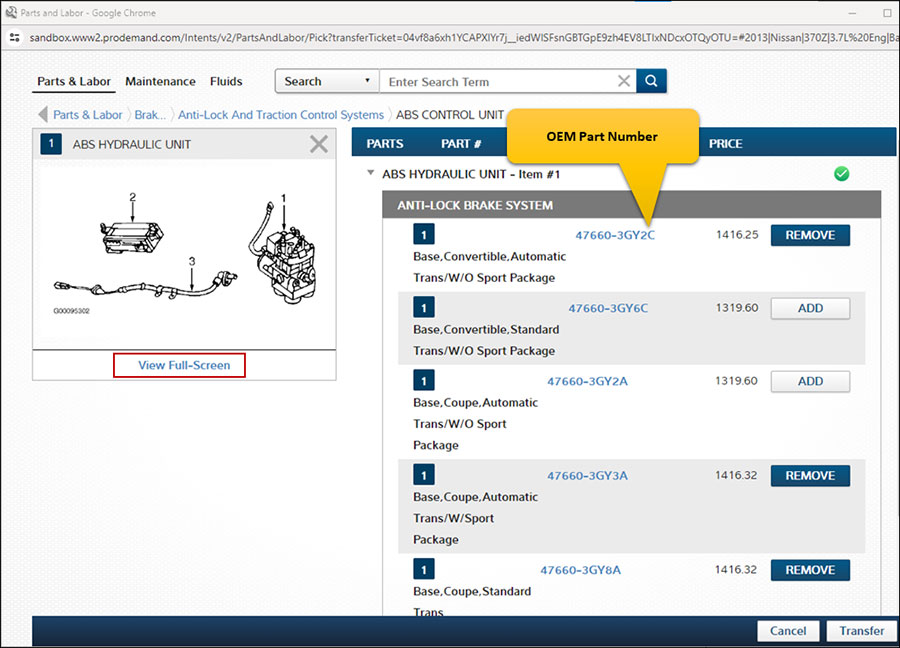
Innovation is not linear. Every advancement in technology opens up countless new avenues for future development, resulting in industries that previously innovated at a crawl being pushed forward at warp speed. This is especially true when it comes to automobiles, as vehicles that were on the cutting edge just a few years ago now appear commonplace or even a bit dated..
For consumers, this is incredible news, as each year they are treated to new car features and functionality that seem to be taken straight from a sci-fi flick. For professional automotive technicians, it means constantly having to evolve and develop your craft, mastering each new trickle of technology as it comes to market. To help you stay on top of the latest trends and newest tech, you can find five of the foremost vehicle trends of 2019 below.
5 Vehicle Repair Trends to Watch in 2019
1. The Advance of Autonomous Vehicles
Driverless cars are coming. It may not be today, it may not be tomorrow, but the sooner auto repair professionals get familiar with the technology, the better prepared they will be for the coming revolution. While industry expert Ben Johnson, the Director of Product Management at Mitchell1, does not see driverless cars becoming mainstream until perhaps 2035, he still acknowledges the technical challenges autonomous vehicles (AVs) will bring. “Technical challenges include the impact of V2X data bandwidth in volumes required to achieve ‘mainstream’ status,” he said, “as well as the viability of AV driving in much of the country during various seasons of the year.”
Advanced Driver Assistance Systems (ADAS) that provide safety features such as adaptive cruise control, lane departure warnings etc., and which are essential to realizing the AV future, are already proving effective in accident avoidance, and already are credited with saving lives. These features will continue to proliferate into mainstream vehicles. But as Johnson acknowledges, ADAS brings “new challenges in the maintenance and repair of vehicles, as many of the sensors, cameras and radar units can require recalibration after traditional services are done on the vehicle.” These new challenges will require auto technicians to constantly stay up to date with the latest technology and their job is going to continue to evolve from turning wrenches to understanding complex software systems.
2. Vehicle Cyber Security
While autonomous vehicles may still be quite a few years from mainstream implementation, software and internet-powered vehicle technology such as ADAS are already a staple in vehicles roaming the road today. ADAS and other new car innovations rely on the internet for functionality, which does make these vehicles and their drivers vulnerable to cyberattacks. While all cyberattacks on vehicles up to this juncture have been done solely for the purpose of research in a safe and controlled setting, it is only a matter of time before a malicious hacker decides to launch an attack.
This susceptibility means that in 2019, cybersecurity is going to have to become a priority. Ziv Levi, an automotive cyber security expert as well as the founder and CEO of Arilou Technologies, emphasized the likelihood of cybersecurity moving from a trend to everyday consideration, saying that. “Cybersecurity will have to become an integrated part of every car, just like antivirus software is there on any PC today.”
That is why the government is taking action, as it is expected that legislation related to the cybersecurity of passenger vehicles will progress. It is absolutely essential to do everything necessary to ensure the safety of all drivers and passengers on the road, and hopefully this legislation will lead to automakers and manufacturers banding together to find a secure and reliable solution. This increase in cybersecurity measures will mean that auto repair specialists will need to be familiar with the latest and greatest technology that works to fight malicious attacks from hackers, possessing the expertise necessary to repair and replace the latest cybersecurity software and technology.
3. Advanced Safety Features Now Come Standard
In the past, only luxury vehicles were supplied with the latest and greatest safety features. Very few cars came equipped with active cruise control, braking intervention, cross traffic alerts, blind spot detection, around view cameras, lane departure warning systems, and other exciting new technologies that promote driver safety.
However, as the technology has become more affordable and omnipresent, manufacturers have begun making many of these features come standard on popular vehicle makes and models. And according to Lauren Fix, an automotive analyst and The Car Coach, comfort is also a key factor. “The comfort of drivers and passengers is the key to selling the model,” Fix says. “This is why we are seeing more heated and cooled seats, heated steering wheels and lumbar support, at no extra charge. All of these used to be extra costs. The Kia Forte is a great example of a $24,000 car with everything standard at no extra cost.”
Of course, safety is still a top concern. More and more car companies are making safety a standard at no extra charge (Honda, Toyota, etc.). Fix says, “The goal is to start the integration to autonomous vehicles, which has run into a few obstacles (pardon the pun) to make them mainstream. Getting consumers and drivers used to these features is the big trend for 2019.”
For those in the auto repair business, that means familiarity with all of the aforementioned safety features is a must.
4. The Growth of Electric Vehicles
Electric cars are not a fad or a flash in the pan. They are here to stay and are revolutionizing both the vehicles themselves and all of the services that come along with them, in both big ways and small. First, the growth and ubiquity of hybrid and electric vehicles is going to completely revamp gas stations as we know it. Amir Hever, CEO of UVeye, thinks that gas stations will “shift from standard refueling to more maintenance-oriented services, including vehicle charging and smart inspections.” Future gas stations may be less of a place to roll your car through for a quick tank of gas and more of a place to get your car charged, serviced and inspected.
In fact, he says, BP and Royal Dutch Shell, two of the largest gas station corporations in the world, have made a sizeable investment in electric vehicle charging companies and are already integrating this new technology into a few test sites. This means that automotive technicians will need to be familiar with a wide range of different types of electric and hybrid vehicles, acquiring the ability to diagnose and fix a variety of different issues.
Along with the increase in electric vehicles comes the introduction of new types of vehicle electrification programs. One such program is the 48v mild hybrid, which can give drivers significant gains in fuel economy while simultaneously reducing emissions, all at the fraction of the cost of a traditional full hybrid or electric car.
Other potentially safe sources to power vehicles are hydrogen or compressed natural gas (CNG). Manufacturers are currently working on the means to produce sustainable sources of hydrogen or CNG, using ethanol and investigating other potential ways to make environmentally friendly hydrogen-powered cars a reality. With this new technology will come a new host of issues to repair and research, so keeping up to date with the latest trends and innovations with electric vehicles becomes a necessity for anyone who works in automotive repair.
5. The Rise of Ridesharing
Ridesharing has gone from a passing curiosity to a complete necessity. More and more individuals use ridesharing services such as Uber and Lyft as their primary means of transportation, eschewing car ownership. While this means less clutter and congestion on the road in the shape of both driven and parked cars, it also means that the cars that are on the road will experience more wear and tear than the average vehicle. So while there may be fewer individual drivers coming to automotive technicians for service, the vehicles that do come in will likely need more extensive repairs and services than traditional vehicles of the same age. That could make partnerships with local rideshare apps a potential boon for business, especially in progressive cities such as San Francisco.
It is also important to consider the next step when it comes to ridesharing. There is a growing segment of individuals who have opted for a vehicle subscription model. Like many young adults who have unplugged cable in favor of a television subscription service such as Netflix or Hulu, ridesharing companies are now offering a subscription service for vehicles.
These subscription services are all-inclusive, with just one monthly payment covering the vehicle, all maintenance costs, car insurance and taxes. As an added bonus, many of these vehicle subscription models allow the consumer to try out different makes and models that are at the same price point, as well as walk away from the subscription at any time without penalty. All of this convenience comes at a cost, as right now a vehicle subscription model holds a very high price point, somewhere between $1,000 and $3,000 a month. However, Richard Reina, the Product Training Director of CARiD, thinks that the price point will go down as more economy cars get into the mix. “Early offerings are coming mainly from luxury vehicle brands, but if this model catches on, it won’t be surprising to see other carmakers find ways to reduce these costs.” If this system becomes a reality, it could lead to a situation similar to healthcare, where individuals with a vehicle subscription service will only get their car serviced at certain, pre-approved mechanics.






